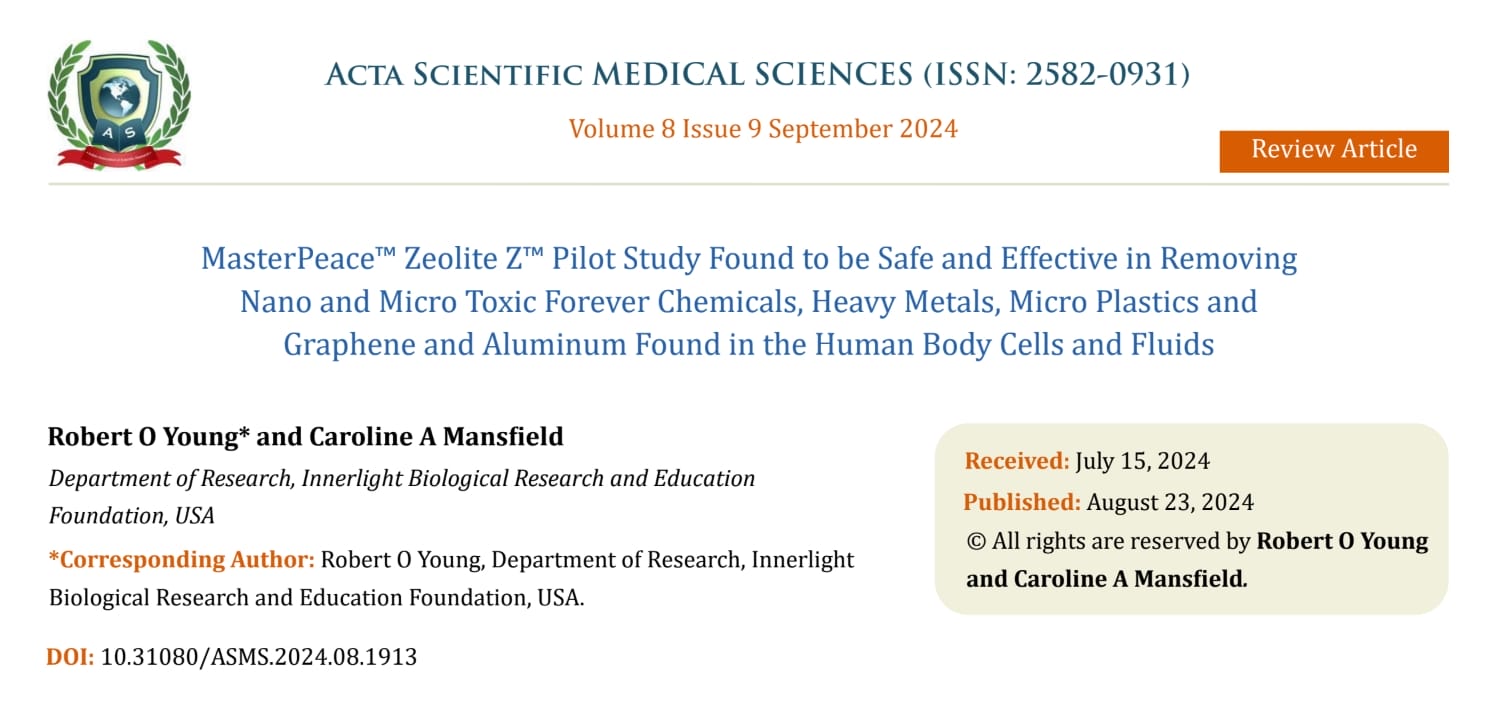THE WEED & HUMAN KILLER ROUNDUP CONTAINS A CANCER CAUSING CHEMICAL CALLED GLYPHOSATE!
Updated: Jul 9, 2022
A CALIFORNIA JURY FOUND ROUNDUP CONTAINING GLYPHOSATE DOES CAUSE CANCER – A BIG REASON FOR BUYING PESTICIDE FREE ORGANIC PRODUCE!

[Roundup Contains a Toxic Chemical Called Glyphosate which was found to cause cancer in a 2021 CDC US Health Study]
August 10th, 2018, a California court found that Monsanto (just acquired by the German Company Bayer) glyphosate Roundup does cause cancer, a jury has declared in an unprecedented trial into the health dangers of Monsanto’s weedkiller.
After three days of deliberations, jurors on Friday sided with terminally-ill grounds man, Dewayne Johnson, 46, who has just weeks to live, awarding him $250 million in punitive damages, plus nearly $40m in compensatory damages, bringing the total to $289m.

Specifically, in eight weeks of proceedings, the jury was left convinced that Monsanto’s product caused Johnson’s cancer.
You can read the entire story here: http://www.dailymail.co.uk/health/article-6049007/Roundup-cancerous-jury-declares.html

In July, of 2021 the CDC published their findings of the toxic effects of glyphosate and other Organophosphorus weed killing compounds that were found in more than 80% of the urine samples drawn from children and adults in the CDC US health study which were directly linked to causing cancer.

An Earlier Study Links Glyphosates NOT ONLY To Cancer, but to Liver/Kidney Damage & Severe Hormonal Disruption!
In November 2012, the Journal of Food and Chemical Toxicology published a paper titled Long Term Toxicity of Roundup Herbicide and a Roundup-Tolerant genetically modified maize by Gilles-Eric Seralini and his team of researchers at France’s Caen University. (source) It was a very significant study that made a lot of noise worldwide, the first of its kind under controlled conditions that examined the possible effects of a GMO maize diet treated with Monsanto’s Roundup Herbicide.

After the research was completed, it went through rigorous reviews, as well as a four-month review process by scientists and researchers. It was eventually approved and published, only to be retracted by request of the Journal. Although hundreds of scientists around the world condemned the retraction, and the researchers addressed the criticisms, it was to no avail.
There is great news to report however, as this major GMO study has now been republished following its controversial retraction (under strong commercial pressure), with even more up to date information and a response to previous criticisms. You can read more about that here. The study has now been published by Environmental Sciences Europe. (source)

The chronic toxicity study examined the health impacts on rats of eating commercialized genetically modified (GM) maize, alongside Monsanto’s NK603 glyphosate-based herbicide Roundup.
The study found severe liver and kidney damage as well as hormonal disturbances in rats fed with GM maize in conjunction with low levels of Roundup that were below those permitted in most drinking water across Europe. Results also indicated high rates of large tumors and mortality in most treatment groups.
The republished study also has a section describing the lobbying efforts of GMO crop supporters to force the retraction of the original publication. This is scientific fraud at its best. The authors express how the previous retraction was “a historic example of conflicts of interest in the scientific assessments of products commercialized worldwide.”
“We also show that the decision to retract cannot be rationalized on any discernible scientific or ethical grounds.
Censorship of research into health risks undermines the value and the credibility of science, thus, we republish our paper.” – Seralini
“Censorship on research into the risks of a technology so critically entwined with global food safety undermines the value and the credibility of science.” – Seralini
This study has now successfully passed through multiple rounds of rigorous peer review. Again, the study shows that Roundup-treated GM corn as well as the herbicide used on it increases cancer in rats. There are a number of studies that demonstrate the potential health risks of GM plants, this one in particular drew heavy criticism from industry scientists.

“The major criticisms of the Seralini manuscript were that the proper strain of rats was not used and their numbers were too small. Neither criticism is valid. The strain of rat is that which is required by the FDA for drug toxicology, and the toxic effects were unambiguously significant. In fact, Monsanto published a similar study in the same journal eight years before using the same number and strain of rats. Their study was for 90 days and claimed no harm. In contrast, the Seralini study was for two years and did not see any tumors until after nine months. Therefore, it is clear that the short 90-day feeding paradigm is not sufficiently long to detect the carcinogenic effects of GM products. It takes a long time before low-level exposure to environmental toxins affect health. For example, a recent associated press report documented the dramatic increase in birth defects and cancer in areas of Argentina that have grown GM soy for a decade. Given these facts, what was the justification of the editorial decision to retract the Seralini Manuscript?” (source)
Other Studies Regarding GMOs and Herbicides

There is a reason that multiple countries all over the world have been banning GMOs and the pesticides that go with them. More information is emerging everyday from scientists and researchers all over the world that clearly points to the fact that we just don’t know enough about GM’s to deem them totally safe for human consumption.
By slipping it into our food without our knowledge, without any indication that there are genetically modified organisms in our food, we are now unwittingly part of a massive experiment.
The FDA has said that genetically modified organisms are not much different from regular food, so they’ll be treated in the same way. The problem is this, geneticists follow the inheritance of genes, what biotechnology allows us to do is to take this organism, and move it horizontally into a totally unrelated species.
Now, David Suzuki doesn’t normally mate with a carrot and exchange genes, what biotechnology allows us to do is to switch genes from one to the other without regard to the biological constraints. It’s very very bad science, we assume that the principles governing the inheritance of genes vertically, applies when you move genes laterally or horizontally. There’s absolutely no reason to make that conclusion – Geneticist David Suzuki (source)

1. Multiple Toxins From GMOs Detected In Maternal and Fetal Blood
Research from Canada (the first of its kind) has successfully identified the presence of pesticides associated with genetically modified foods in maternal, fetal and non-pregnant women’s blood. They also found the presence of Monsanto’s Bt toxin. The study was published in the Journal Reproductive Toxicology in 2011.(1) You can read the FULL study here.
“Given the potential toxicity of these environmental pollutants and the fragility of the fetus, more studies are needed, particularly those using the placental transfer approach.”
“Thus, our present results will provide baseline data for future studies exploring a new area of research relating to nutrition, toxicology and reproduction in women. Today, obstetric-gynecological disorders that are associated with environmental chemicals are not known. Thus, knowing the actual concentration of genetically modified foods in humans constitutes a cornerstone in the advancement of research in this area.”(1)
The study used blood samples from thirty pregnant women and thirty non-pregnant women. The study also pointed out that the fetus is considered to be highly susceptible to the adverse affects of xenobiotics (foreign chemical substance found within an organism that is not naturally produced.) This is why the study emphasizes that knowing more about GMOs is crucial, because environmental agents could disrupt the biological events that are required to ensure normal growth and development.
2. DNA From Genetically Modified Crops Can Be Transferred Into Humans Who Eat Them
In a new study published in the peer-reviewed Public Library of Science (PLOS), researchers emphasize that there is sufficient evidence that meal-derived DNA fragments carry complete genes that can enter into the human circulation system through an unknown mechanism.(2)
In one of the blood samples the relative concentration of plant DNA is higher than the human DNA. The study was based on the analysis of over 1000 human samples from four independent studies. PLOS is an open access, well-respected peer-reviewed scientific journal that covers primary research from disciplines within science and medicine. It’s great to see this study published in it, confirming what many have been suspected for years.
“Our bloodstream is considered to be an environment well separated from the outside world and the digestive tract.”
“According to the standard paradigm large macromolecules consumed with food cannot pass directly to the circulatory system. During digestion proteins and DNA are thought to be degraded into small constituents, amino acids and nucleic acids, respectively, and then absorbed by a complex active process and distributed to various parts of the body through the circulation system. Here, based on the analysis of over 1000 human samples from four independent studies, we report evidence that meal-derived DNA fragments which are large enough to carry complete genes can avoid degradation and through an unknown mechanism enter the human circulation system. In one of the blood samples the relative concentration of plant DNA is higher than the human DNA. The plant DNA concentration shows a surprisingly precise log-normal distribution in the plasma samples while non-plasma (cord blood) control sample was found to be free of plant DNA.”(2)
This still doesn’t mean that GMOs can enter into our cells, but given the fact GMOs have been linked to cancer (later in this article) it is safe to assume it is indeed a possibility. The bottom line is that we don’t know, and this study demonstrates another cause for concern.
3. New Study Links GMOs To Gluten Disorders That Affect 18 Million Americans
This study was recently released by the Institute for Responsible Technology (IRT), and uses data from the US department of Agriculture, US Environmental Protection Agency, medical journal reviews as well as other independent research.(3)(4)
The authors relate GM foods to five conditions that may either trigger or exacerbate gluten-related disorders, including the autoimmune disorder, Celiac Disease:
-
Intestinal permeability
-
Imbalanced gut bacteria
-
Immune activation and allergic response
-
Impaired digestion
-
Damage to the intestinal wall
The Institute for Responsible technology is a world leader in educating policy makers and the public about GMO foods and crops. The institute reports and investigates on the impact GM foods can have on health, environment, agriculture and more.
4. Study Links Genetically Modified Corn to Rat Tumor
In November 2012, The Journal of Food and Chemical Toxicology published a paper titled ‘Long term toxicity of a Roundup herbicide and a Roundup-tolerant genetically modified maize’ by Gilles-Eric Seralini and his team of researchers at France’s Caen University.(5)
It was a very significant study, which obviously looks bad for the big bio tech companies like Monsanto, being the first and only long-term study under controlled conditions examining the possible effects of a diet of GMO maize treated with Monsanto roundup herbicide.
This study has since been retracted, which is odd, because the journal it was published in is a very well-known, reputable peer-reviewed scientific journal. In order for a study to be published here it has to go through a rigorous review process.
It’s also important to note that hundreds of scientists from around the world have condemned the retraction of the study. This study was done by experts, and a correlation between GMOs and these tumors can’t be denied, something happened.
The multiple criticisms of the study have also been answered by the team of researchers that conducted the study. You can read them and find out more about the study here.
GM Crop Production is Lowering US Yields and Increasing Pesticide Use
5. Glyphosate Induces Human Breast Cancer Cells Growth via Estrogen Receptors
A study is published in the US National Library of Medicine (4) and will soon be published in the journal Food and Chemical Toxicology. Several recent studies showed glyphosate’s potential to be an endocrine disruptor. Endocrine disruptors are chemicals that can interfere with the hormone system in mammals. These disruptors can cause developmental disorders, birth defects and cancer tumors. (6)
Glyphosate exerted proliferative effects only in human hormone-dependent breast cancer. We found that glyphosate exhibited a weaker estrogenic activity than estradiol. Furthermore, this study demonstrated the additive estrogenic effects of glyphosate and genisein which implied that the use of contaminated soybean products as dietary supplements may pose a risk of breast cancer because of their potential additive estrogenicity.(6)
Researchers also determined that Monsanto’s roundup is considered an “xenoestrogen,” which is a foreign estrogen that mimics real estrogen in our bodies. This can cause a number of problems that include an increased risk of various cancers, early onset of puberty, thyroid issues, infertility and more.
6. Glyphosate Linked To Birth Defects
A group of scientists put together a comprehensive review of existing data that shows how European regulators have known that Monsanto’s glyphosate causes a number of birth malformations since at least 2002. Regulators misled the public about glyphosate’s safety, and in Germany the Federal Office for Consumer Protection and Food Safety told the European Commission that there was no evidence to suggest that glyphosate causes birth defects.(7) (link might not work for some, if not you can access that report HERE)
Our examination of the evidence leads us to the conclusion that the current approval of glyphosate and Roundup is deeply flawed and unreliable. In this report, we examine the industry studies and regulatory documents that led to the approval of glyphosate. We show that industry and regulators knew as long ago as the 1980s and 1990s that glyphosate causes malformation – but that this information was not made public. We demonstrate how EU regulators reasoned their way from clear evidence of glyphosate’s teratogenicity in industry’s own studies to a conclusion that minimized these findings in the EU Commission’s final review report.(7)
Here is a summary of the report:
Multiple peer-reviewed scientific literature documenting serious health hazards posed by glyphosate.
Industry (including Monsanto) has known since the 1980′s that glyphosate causes malformations in experimental animals at high doses.
Industry has known since 1993 that these effects could also occur at lower and mid doses.
The German government has known since at least 1998 that glyphosate causes malformations.
The EU Commission’s expert scientific review panel knew in 1999 that glyphosate causes malformations.
The EU Commission has known since 2002 that glyphosate causes malformations. This was the year DG SANCO division published its final review report, laying out the basis for the current approval of glyphosate.
Another study published by the American Chemical Society, from the university of Buenos Aires, Argentina also showed that Glyphosate can cause abnormalities.(8)
The direct effect of glyphosate on early mechanisms of morphogenesis in vertebrate embryos opens concerns about the clinical findings from human offspring in populations exposed to glyphosate in agricultural fields.(8)
7. Study Links Glyphosate To Autism, Parkinson’s and Alzheimer’s
When you ingest Glyphosate, you are in essence altering the chemistry of your body. It’s completely unnatural and the body doesn’t resonate with it. P450 (CYP) is the gene pathway disrupted when the body takes in Glyphosate. P450 creates enzymes that assist with the formation of molecules in cells, as well as breaking them down. CYP enzymes are abundant and have many important functions.
They are responsible for detoxifying xenobiotics from the body, things like the various chemicals found in pesticides, drugs and carcinogens. Glyphosate inhibits the CYP enzymes. The CYP pathway is critical for normal, natural functioning of multiple biological systems within our bodies.
Because humans that’ve been exposed to glyphosate have a drop in amino acid tryptophan levels, they do not have the necessary active signalling of the neurotransmitter serotonin, which is associated with weight gain, depression and Alzheimer’s disease.(9)
8. Chronically Ill Humans Have Higher Glyphosate Levels Than Healthy Humans
A new study out of Germany concludes that Glyphosate residue could reach humans and animals through feed and can be excreted in urine. It outlines how presence of glyphosate in urine and its accumulation in animal tissues is alarming even at low concentrations.(10)
To this day, Monsanto continues to advertise its Roundup products as environmentally friendly and claims that neither animals nor humans are affected by this toxin.
Environmentalists, veterinarians, medical doctors and scientists however, have raised increasing alarms about the danger of glyphosate in the animal and human food chain as well as the environment. The fact that glyphosate has been found in animals and humans is of great concern.
In search for the causes of serious diseases amongst entire herds of animals in northern Germany, especially cattle, glyphosate has repeatedly been detected in the urine, feces, milk and feed of the animals. Even more alarming, glyphosate was detected in the urine of the farmers.(10)
9. Studies Link GMO Animal Feed to Severe Stomach Inflammation and Enlarged Uteri in Pigs
A study by scientist Judy Carman, PhD that was recently published in the peer-reviewed journal Organic Systems outlines the effects of a diet mixed with GMO feed for pigs, and how it is a cause for concern when it comes to health(11)
Scientists randomized and fed isowean pigs either a mixed GM soy and GM corn (maize) diet for approximately 23 weeks (nothing out of the ordinary for most pigs in the United States), which is unfortunately the normal lifespan of a commercial pig from weaning to slaughter. Equal numbers of male and female pigs were present in each group. The GM diet was associated with gastric and uterine differences in pigs. GM pigs had uteri that were 25% heavier than non-GM fed pigs. GM-fed pigs had a higher rate of severe stomach inflammation with a rate of 32% compared to 125 of non-GM fed pigs.
The study concluded that pigs fed a GMO diet exhibited a heavier uteri and a higher rate of severe stomach inflammation than pigs who weren’t fed a GMO diet.
Because the use of GMO feed for livestock and humans is so widespread, this is definitely another cause for concern when it comes to GMO consumption. Humans have a similar gastrointestinal tract to pigs, and these GM crops are consumed widely by people, especially in the United States.
10. GMO risk assessment is based on very little scientific evidence in the sense that the testing methods recommended are not adequate to ensure safety (12)(13)(14)
Deficiencies have been revealed numerous times with regards to testing GM foods.
The first guidelines were originally designed to regulate the introduction of GM microbes and plants into the environment with no attention being paid to food safety concerns. However, they have been widely cited as adding authoritative scientific support to food safety assessment.
Additionally, the Statement of Policy released by the Food and Drug Administration of the United States, presumptively recognizing the GM foods as GRAS (generally recognized as safe), was prepared while there were critical guidelines prepared by the International Life Sciences Institute Europe and FAO/WHO recommend that safety evaluation should be based on the concept of substantial equivalence, considering parameters such as molecular characterization, phenotypic characteristics, key nutrients, toxicants and allergens.
Since 2003, official standards for food safety assessment have been published by the Codex Alimentarius Commission of FAO/WHO. Published reviews with around 25 peer-reviewed studies have found that despite the guidelines, the risk assessment of GM foods has not followed a defined prototype.(12) (15)
“The risk assessment of genetically modified (GM) crops for human nutrition and health has not been systematic.
Evaluations for each GM crop or trait have been conducted using different feeding periods, animal models and parameters. The most common results are that GM and conventional sources include similar nutritional performance and growth in animals. However, adverse microscopic and molecular effects of some GM foods in different organs or tissues have been reported. While there are currently no standardized methods to evaluate the safety of GM foods, attempts towards harmonization are on the way. More scientific effort is necessary in order to build confidence in the evaluation and acceptance of GM foods.” (12) (15)

The Russian government has ordered all relevant agencies to examine whether or not to continue imports of genetically modified organisms (GMOs) into the country.

Support the work, research and findings of Dr. Robert O. Young at: https://www.givesendgo.com/research
No donation is too small and will be appreciated and used for continuous research, publications and public education!
* * *
As a special thank you for your donation, I will answer one health or lifestyle related question.
After your donation, please email me at: phmiraclelife@gmail.com.
Keep your question short and very specific. Please include your first and last name, phone number and email. Your question will be answered within 72 hours.
God bless YOU ALL!
Stay healthy and happy!
www.givesendgo.com/research
www.drrobertyoung.com/blog
Resources:
(All other sources not listed here are highlighted throughout the article) http://www.enveurope.com/content/26/1/13 (1)https://www.uclm.es/Actividades/repositorio/pdf/doc_3721_4666.pdf (2)http://www.plosone.org/article/info%3Adoi%2F10.1371%2Fjournal.pone.0069805 (3) http://rt.com/usa/gmo-gluten-sensitivity-trigger-343/ (4)http://responsibletechnology.org/media/images/content/Press_Release_Gluten_11_25.pdf (5)http://www.sciencedirect.com/science/article/pii/S0278691512005637 (6) http://www.ncbi.nlm.nih.gov/pubmed/23756170 (7) http://earthopensource.org/files/pdfs/Roundup-and-birth-defects/RoundupandBirthDefectsv5.pdf (8) http://pubs.acs.org/doi/abs/10.1021/tx1001749 (9) http://www.mdpi.com/1099-4300/15/4/1416 (10) http://omicsonline.org/open-access/detection-of-glyphosate-residues-in-animals-and-humans-2161-0525.1000210.pdf (11) http://www.organic-systems.org/journal/81/8106.pdf (12)http://static.aboca.com/www.aboca.com/files/attach/news/risk_assessment_of_genetically_modified_crops_for_nutrition.pdf (13) Reese W, Schubert D. Safety testing and regulation of genetically engineered foods. Biotechnol Genet Eng Rev. 2004;21:299–324 (14) Schubert D. A different perspective on GM food. Nat Biotechnol. 2002;20:969–969. (15) http://www.ncbi.nlm.nih.gov/pubmed/19146501 (16) http://www.phoreveryoung.wordpress.com (17) http://www.phoreveryoung.wordpress.com



